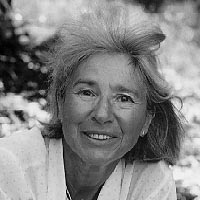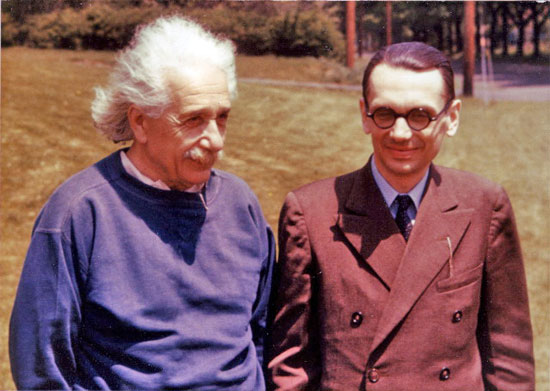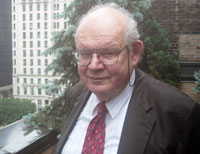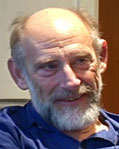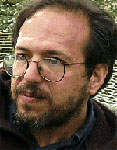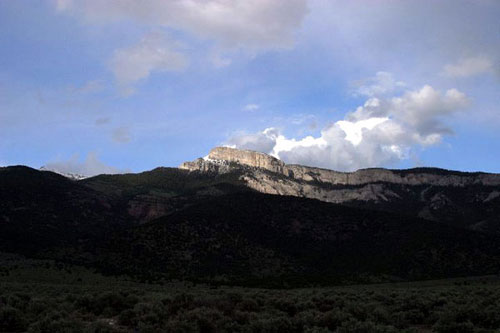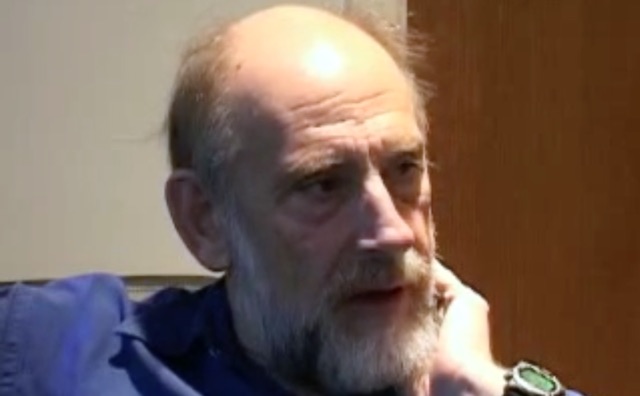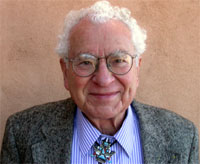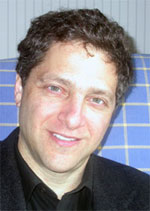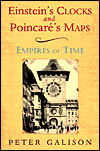What we've discovered in the last several years is that string theory has an incredible diversity—a tremendous number of solutions—and allows different kinds of environments. A lot of the practitioners of this kind of mathematical theory have been in a state of denial about it. They didn't want to recognize it. They want to believe the universe is an elegant universe—and it's not so elegant. It's different over here. It's that over here. It's a Rube Goldberg machine over here. And this has created a sort of sense of denial about the facts about the theory. The theory is going to win, and physicists who are trying to deny what's going on are going to lose.
LEONARD SUSSKIND, the discoverer of string theory, is the Felix Bloch Professor in theoretical physics at Stanford University. His contributions to physics include the discovery of string theory, the string theory of black hole entropy, the principle of "black hole complementarity," the holographic principle, the matrix description of M-theory, the introduction of holographic entropy bounds in cosmology, the idea of an anthropic string theory "landscape." Leonard Susskind's Edge Bio Page
The Reality Club: Paul Steinhardt, Lee Smolin, Kevin Kelly, Alexander Vilenkin, Lenny Susskind, Steve Giddings, Lee Smolin, Gino Segre, Lenny Susskind, Gerard 't Hooft, Lenny Susskind, Maria Spiropulu
Introduction
by John Brockman
For some people, the universe is eternal. For me, it's breaking news.
Recently I sat down to talk with Lenny Susskind, the discoverer of string theory. After he left, I realized I had become so caught up in his story-telling that I forgot to ask him "what's new in the universe?" So I sent him an email. Here's his response...
~~~
The beginning of the 21st century is a watershed in modern science, a time that will forever change our understanding of the universe. Something is happening which is far more than the discovery of new facts or new equations. This is one of those rare moments when our entire outlook, our framework for thinking, and the whole epistemology of physics and cosmology are suddenly undergoing real upheaval. The narrow 20th-century view of a unique universe, about ten billion years old and ten billion light years across with a unique set of physical laws, is giving way to something far bigger and pregnant with new possibilities.
Gradually physicists and cosmologists are coming to see our ten billion light years as an infinitesimal pocket of a stupendous megaverse. At the same time theoretical physicists are proposing theories which demote our ordinary laws of nature to a tiny corner of a gigantic landscape of mathematical possibilities.
This landscape of possibilities is a mathematical space representing all of the possible environments that theory allows. Each possible environment has its own laws of physics, elementary particles and constants of nature. Some environments are similar to our own corner of the landscape but slightly different. They may have electrons, quarks and all the usual particles, but gravity might be a billion times stronger. Others have gravity like ours but electrons that are heavier than atomic nuclei. Others may resemble our world except for a violent repulsive force (called the cosmological constant) that tears apart atoms, molecules and even galaxies. Not even the dimensionality of space is sacred. Regions of the landscape describe worlds of 5,6…11 dimensions. The old 20th century question, "What can you find in the universe?" is giving way to "What can you not find?"
The diversity of the landscape is paralleled by a corresponding diversity in ordinary space. Our best theory of cosmology called inflationary cosmology is leading us, sometimes unwillingly, to a concept of a megaverse, filled with what Alan Guth, the father of inflation, calls "pocket universes." Some pockets are small and never get big. Others are big like ours but totally empty. And each lies in its own little valley of the landscape.
Man’s place in the universe is also being reexamined and challenged. A megaverse that diverse is unlikely to be able to support intelligent life in any but a tiny fraction of its expanse. Many of the questions that we are used to asking such as 'Why is a certain constant of nature one number instead of another?' will have very different answers than what physicists had hoped for. No unique value will be picked out by mathematical consistency, because the landscape permits an enormous variety of possible values. Instead the answer will be "Somewhere in the megaverse the constant is this number, and somewhere else it is that. And we live in one tiny pocket where the value of the constant is consistent with our kind of life. That’s it! There is no other answer to that question."
The kind of answer that this or that is true because if it were not true there would be nobody to ask the question is called the anthropic principle. Most physicists hate the anthropic principle. It is said to represent surrender, a giving up of the noble quest for answers. But because of unprecedented new developments in physics, astronomy and cosmology these same physicists are being forced to reevaluate their prejudices about anthropic reasoning. There are four principal developments driving this sea change. Two come from theoretical physics, and two are experimental or observational.
On the theoretical side, an outgrowth of inflationary theory called eternal inflation is demanding that the world be a megaverse full of pocket universes that have bubbled up out of inflating space like bubbles in an uncorked bottle of Champagne. At the same time string theory, our best hope for a unified theory, is producing a landscape of enormous proportions. The best estimates of theorists are that 10500 distinct kinds of environments are possible.
Very recent astronomical discoveries exactly parallel the theoretical advances. The newest astronomical data about the size and shape of the universe convincingly confirm that inflation is the right theory of the early universe. There is very little doubt that our universe is embedded in a vastly bigger megaverse.
But the biggest news is that in our pocket the notorious cosmological constant is not quite zero, as it was thought to be. This is a cataclysm and the only way that we know how to make any sense of it is through the reviled and despised anthropic principle.
I don’t know what strange and unimaginable twists our view of the universe will undergo while exploring the vastness of the landscape. But I would bet that at the turn of the 22nd century, philosophers and physicists will look back nostalgically at the present and recall a golden age in which the narrow provincial 20th century concept of the universe gave way to a bigger better megaverse, populating a landscape of mind-boggling proportions.
~~~
Below is a wide ranging discussion with Lenny. "To this day," he says, "the only real physics problem that has been solved by string theory is the problem of black holes. It led to some extremely revolutionary and strange ideas."
"Up to now string theory has had nothing to say about cosmology. Nobody has understood the relationship between string theory and the Big Bang, inflation, and other aspects of cosmology. I frequently go to conferences that often have string theorists and cosmologists, and usually the string theory talks consist of apologizing for the fact that they haven't got anything interesting to tell the cosmologists. This is going to change very rapidly now because people have recognized the enormous diversity of the theory."
Read on...
—JB

